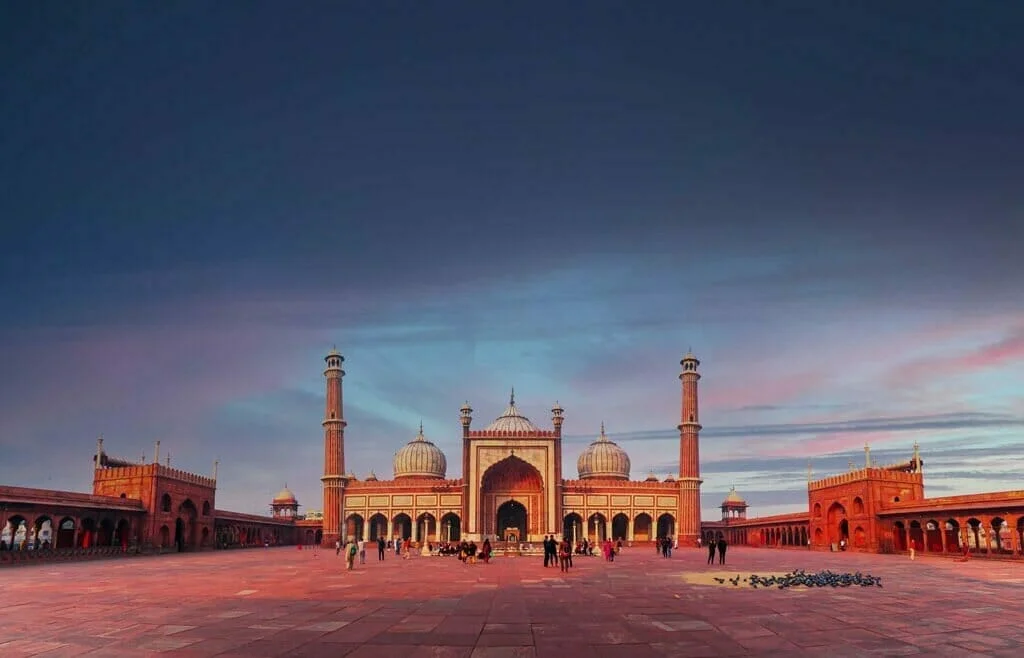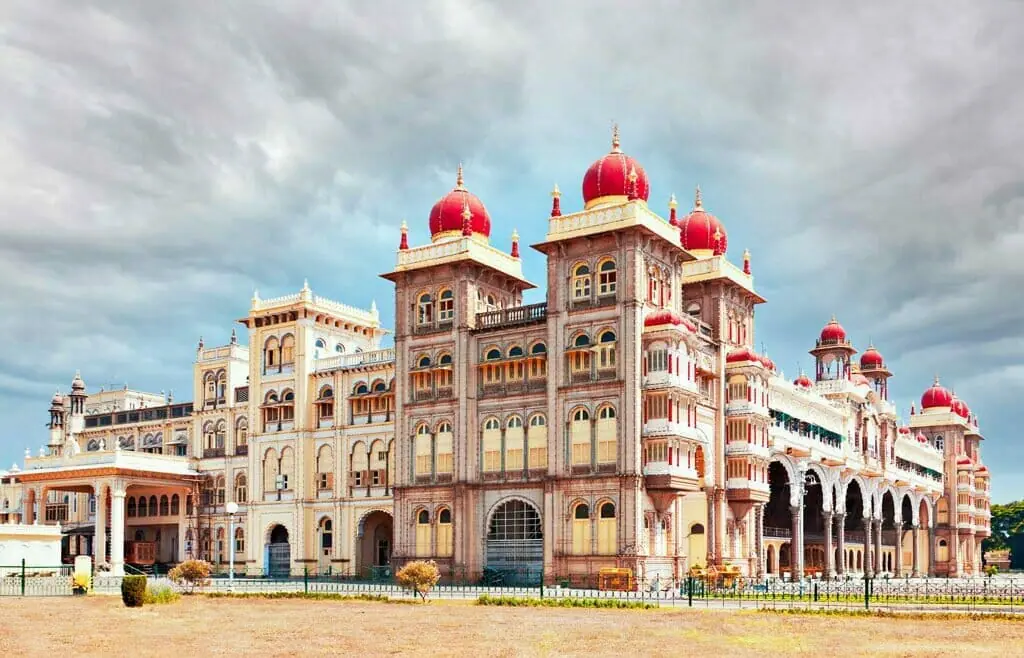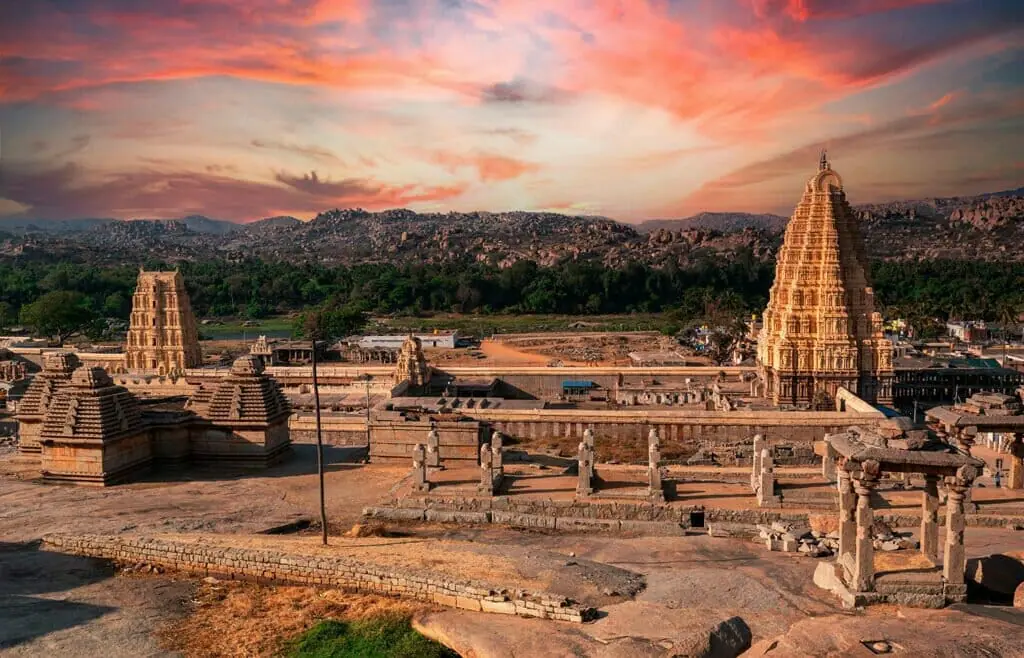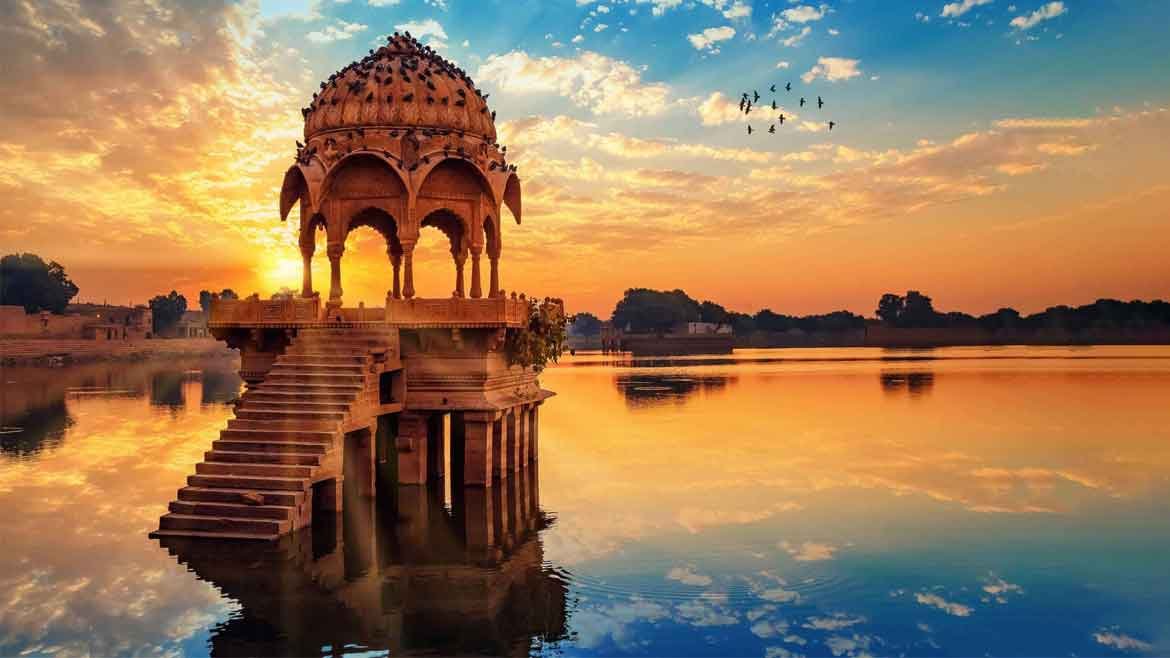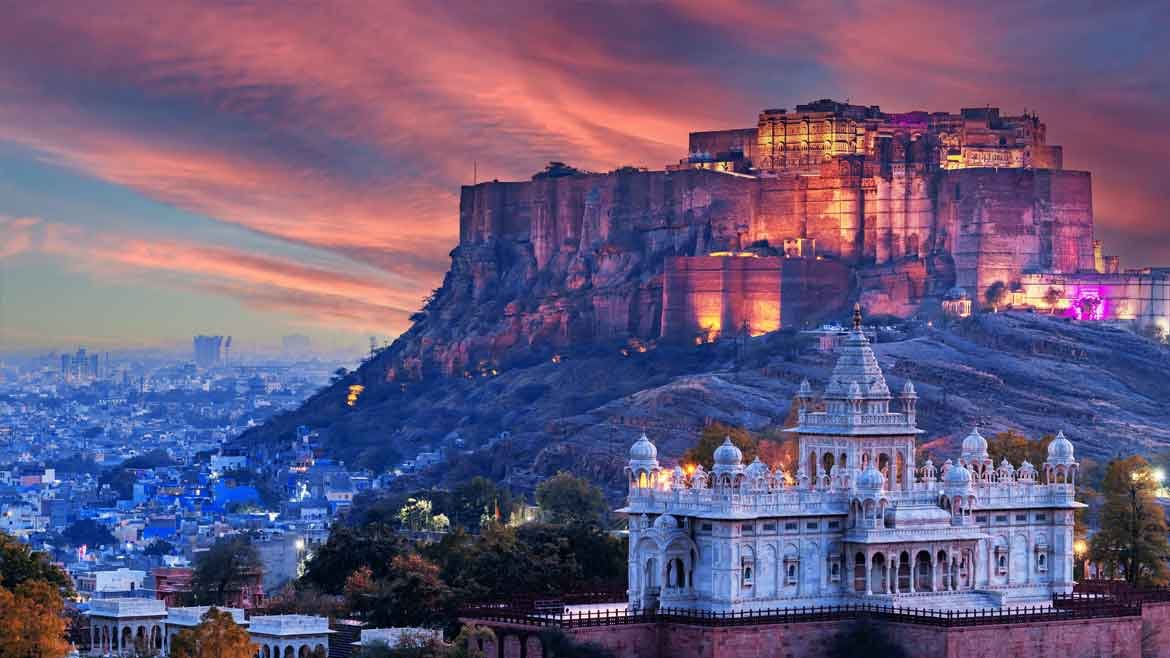Monuments at Hampi
Group of Monuments at Hampi
The Last Capital of Vijayanagara Empire
Introduction
The Group of Monuments at Hampi, located in the southern state of Karnataka, India, is a UNESCO World Heritage Site and a testament to the rich history and architectural brilliance of the Vijayanagara Empire. Spread across a vast landscape, Hampi’s monuments are a stunning amalgamation of intricate carvings, grand temples, and ancient ruins, drawing visitors from around the world. With a history dating back to the 14th century, Hampi offers a captivating glimpse into the glorious past of the Vijayanagara Empire and its cultural significance. This article explores the historical background, architectural marvels, preservation efforts, cultural importance, tourism potential, and future challenges of the Group of Monuments at Hampi.
The UNESCO World Heritage Site
Welcome to Hampi, a place where time stands still and history comes alive! The Group of Monuments at Hampi is a UNESCO World Heritage Site located in the state of Karnataka, India. Spread over an area of 4,100 hectares, this vast archaeological complex is a treasure trove of ancient temples, palaces, markets, and other architectural wonders.
Overview of the Hampi Monuments
The Hampi Monuments are a testament to the grandeur and glory of the Vijayanagara Empire, one of the greatest South Indian empires. The ruins at Hampi span over several centuries, with most of the structures dating back to the 14th and 16th centuries. As you explore the site, you’ll be mesmerized by the stunning craftsmanship, intricate carvings, and the sheer size of these architectural marvels.
Hampi’s Role as the Capital of the Vijayanagara Empire
Hampi holds immense historical significance as it was once the capital of the mighty Vijayanagara Empire. At its peak, the empire ruled over a vast territory, encompassing most of South India. It was during this time that Hampi flourished as a magnificent and prosperous city, attracting traders, scholars, and artists from around the world.
Rise and Fall of the Vijayanagara Empire
The rise of the Vijayanagara Empire can be attributed to the visionary leadership of its rulers, who fostered a rich cultural and religious environment. However, the empire faced its downfall in 1565 after a disastrous battle with the Deccan Sultanate. The city of Hampi was sacked, and the once-flourishing empire was left in ruins. Today, these ruins serve as a haunting reminder of a bygone era.
Vijayanagara Style Architecture
The monuments at Hampi exhibit the unique Vijayanagara style of architecture, characterized by intricate carvings, majestic pillars, and elaborate entrance gateways. The temples, in particular, showcase the expertise of the artisans who meticulously crafted every detail. The fusion of Dravidian and Islamic architectural elements is a testament to the diverse influences that shaped the Vijayanagara style.
Influences and Innovations in Hampi’s Architecture
While the Vijayanagara style forms the foundation of Hampi’s architecture, one cannot ignore the influences and innovations that have left their mark. The temples bear witness to the mastery of stone carvers who pushed the boundaries to create awe-inspiring structures. From the ornate Virupaksha Temple to the grand Vittala Temple Complex, each monument is a masterpiece in its own right.
Virupaksha Temple
Prepare to be enchanted by the Virupaksha Temple, one of the oldest and most revered temples in Hampi. With its towering gopuram (gateway tower), intricate carvings, and the presence of a resident elephant, this temple offers a spiritual and cultural experience like no other.
Vittala Temple Complex
The Vittala Temple Complex is a must-visit for architecture enthusiasts. It is famous for its remarkable stone chariot, musical pillars that produce melodious sounds when struck, and the stunningly carved Kalyana Mandapa (marriage hall). The sheer beauty and attention to detail in this complex will leave you awestruck.
Lotus Mahal
The Lotus Mahal, a delightful blend of Hindu and Islamic architectural styles, is a highlight of the Hampi Monuments. This elegant structure with its lotus-shaped arches and domes was once used as a recreational palace for the royal women. It’s the perfect spot for a photo op and a peek into the royal lifestyle of the past.
So, whether you’re a history buff, an architecture enthusiast, or just someone seeking a unique travel experience, the Group of Monuments at Hampi promises to take you on an unforgettable journey through time.
Challenges in Preserving Hampi’s Monuments
Preserving Hampi’s magnificent monuments is no small feat. From the scorching heat of the Indian sun to the relentless march of time, these structures face numerous challenges. The extreme weather conditions, combined with inadequate maintenance over the centuries, have led to erosion, corrosion, and general deterioration of the monuments.
Additionally, Hampi’s popularity as a tourist destination poses a threat to the preservation of the site. The constant influx of visitors can put stress on fragile structures, leading to wear and tear. It’s like trying to keep a candle burning while there’s a gusty wind blowing your way.
Conservation Initiatives and Techniques
Fortunately, there are dedicated efforts to ensure the survival of Hampi’s architectural wonders. Conservation initiatives have been implemented to protect and restore the monuments. Expert archaeologists and conservators work tirelessly to study, document, and preserve the site’s heritage.
Various techniques, such as scientific analysis, laser scanning, and structural stabilization, are employed in the conservation process. These methods not only help in understanding the architectural intricacies of the monuments but also aid in their restoration.
It’s like having a team of superheroes, armed with advanced technology, fighting to keep the past alive for future generations to marvel at.
Hampi as a Pilgrimage Site
Hampi holds immense cultural and religious significance for people from all walks of life. It is considered a sacred site by Hindus, as it is believed to be the mythical Kishkinda, the kingdom of the monkey god, Hanuman.
Devotees flock to Hampi to visit the various temples strewn across its landscape. The Virupaksha Temple, dedicated to Lord Shiva, is particularly revered. Its towering gopuram (gateway tower) and ornate sculptures are a testament to the architectural brilliance of the Vijayanagara Empire.
It’s like stepping into a spiritual time machine that transports you to an era of profound devotion and majestic grandeur.
Festivals and Rituals Celebrated in Hampi
Hampi comes alive with vibrant festivities and ancient rituals. The annual Hampi Utsav (festival) is a celebration of the city’s rich heritage through cultural performances, music, dance, and a grand procession. The air is filled with joy and the streets are adorned with colorful decorations, as locals and tourists join in the revelry.
During religious celebrations, the temples are adorned with flowers, lamps, and offerings. The rhythmic chants and the sound of bells reverberate through the air, creating an atmosphere of spiritual devotion.
It’s like immersing oneself in a cultural explosion, where the rich tapestry of past and present traditions seamlessly intertwine.
Planning a Visit to Hampi
Planning a visit to Hampi is like embarking on a quest to unravel the mysteries of an ancient civilization. Before setting foot in this enchanting city, it’s essential to do some research and prepare a well-thought-out itinerary.
Consider the weather, as Hampi can get scorching hot during the summer months. Be sure to carry sunscreen, a hat, and plenty of water. Comfortable footwear is a must, as exploring the vast site will require some walking.
Exploring the Monuments and Attractions in Hampi
The vast expanse of Hampi offers a treasure trove of architectural marvels waiting to be discovered. From the iconic stone chariot at the Vittala Temple Complex to the stunning Lotus Mahal in the Zenana Enclosure, each monument has a story to tell.
Renting a bicycle or hiring a local guide can enhance your exploration experience. Navigating the winding paths and dusty trails, you’ll feel a sense of adventure as you uncover hidden gems amidst the ruins. And don’t forget to take breaks to soak in the awe-inspiring views.
Embarking on an archaeological adventure is akin to stepping into the shoes of a modern-day Indiana Jones, albeit without the iconic fedora.
Balancing Preservation and Tourism
Maintaining a delicate balance between preserving the historical significance of Hampi’s monuments and meeting the demands of tourism poses a significant challenge. The increasing number of visitors, while beneficial for the local economy, can potentially lead to overcrowding and the risk of irreversible damage to the structures.
Striking a harmonious equilibrium between preservation and tourism requires careful planning, sustainable tourism practices, and effective management strategies. It’s like walking a tightrope, ensuring the past remains intact while allowing people to appreciate its beauty.
Sustainable Development for Hampi’s Monuments
Sustainable development is the key to securing a bright future for Hampi’s monuments. Preservation efforts must be complemented with initiatives that promote responsible tourism, community engagement, and environmental conservation.
Encouraging local artisans, preserving traditional crafts, and providing educational opportunities to the community are vital steps toward ensuring the long-term sustainability of the site. By fostering a sense of ownership and pride among the locals, Hampi’s heritage can continue to thrive.
It’s like sowing the seeds of sustainable growth, nurturing a future where the past is celebrated, not forgotten. In conclusion, the Group of Monuments at Hampi stands as a remarkable testament to the grandeur and artistic achievements of the Vijayanagara Empire.
With its rich historical significance, architectural marvels, and cultural importance, Hampi continues to captivate visitors from all corners of the globe. Efforts in conservation and restoration ensure that future generations can appreciate and learn from these magnificent structures.
As Hampi navigates the delicate balance between preservation and tourism, it holds the potential to prosper as a cultural and heritage destination while safeguarding its invaluable treasures. The Group of Monuments at Hampi stands as a timeless reminder of India’s glorious past and a beacon of inspiration for the future.
What is the best time to visit Hampi’s monuments?
Visiting Hampi’s monuments is recommended during the winter months, from October to February. The weather during this period is pleasant and ideal for exploring the archaeological sites. Summers can be extremely hot, and monsoons bring heavy rainfall, which may hinder sightseeing activities.
How can I reach Hampi?
Hampi is well-connected by road and rail. The nearest major city is Hospet, which is about 13 kilometers away. Hospet has a railway station that is well-connected to major cities in India. From Hospet, one can hire a taxi or take a local bus to reach Hampi. The nearest airport is Hubli Airport, located about 160 kilometers away.
Are there any entry fees to visit the monuments?
Yes, there are entry fees to visit some of the monuments in Hampi. The fees vary for Indian and foreign tourists. Additionally, there may be separate fees for specific sites or temples within the Hampi complex. It is advisable to check the latest entry fees and regulations before planning your visit.
Can I hire a guide to explore the monuments?
Yes, hiring a guide is highly recommended to fully appreciate the historical and architectural significance of the monuments at Hampi. Guides are knowledgeable about the history, legends, and intricate details of the structures, providing valuable insights during your visit. Guides can be hired at the entrance of the major monuments or can be arranged through local tour operators.



